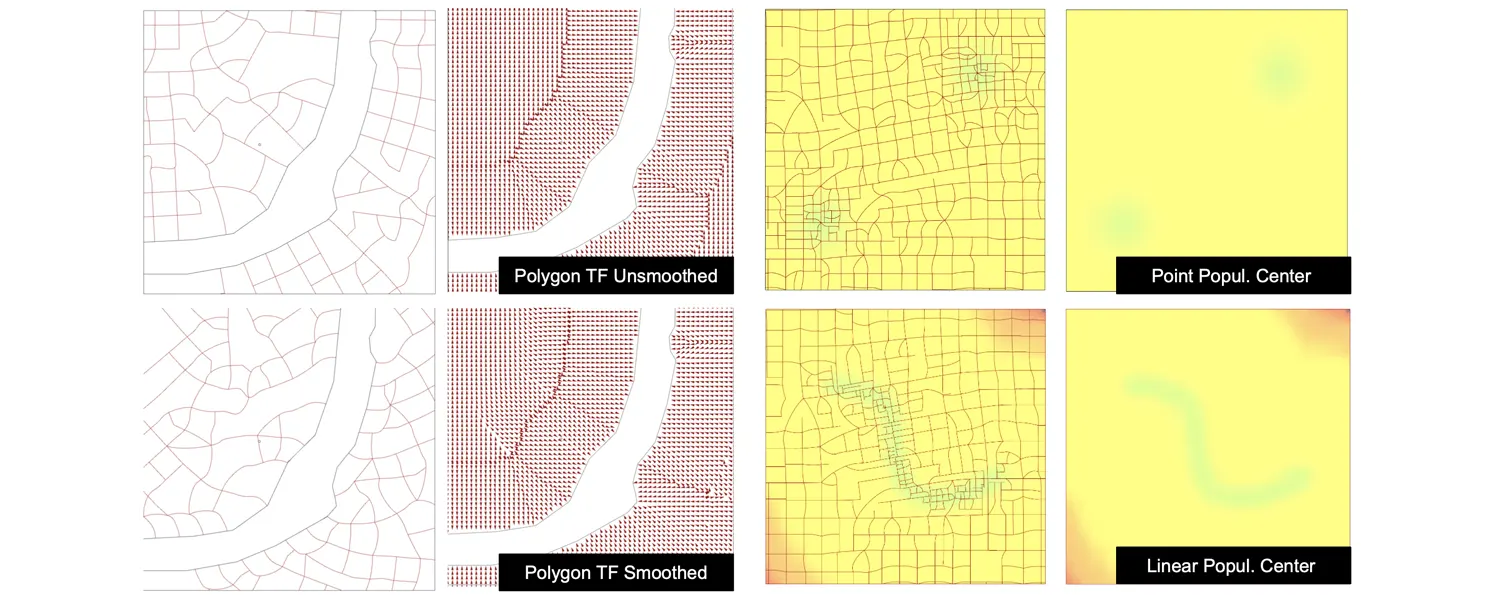Tensor Field Networks
Urban Form Generator
- Authors: Yue Sun, Timur Dogan
- Date: 2021 - Ongoing
- Link: Urbano.io Website
Rapid population growth and climate change are driving urban renewal and urbanization at massive scales. New computational methods are needed to better support urban designers in developing sustainable, resilient, and livable urban environments. Despite the emergence of tools for mobility, public health, and environmental performance simulation, strategic urban design space exploration and multi-objective optimization of masterplans remain challenging due to a lack of generalizable methods for urban form generation. A variety of computational approaches have been proposed to facilitate the automatic generation of urban form. However, most of these developments have produced siloed tools and disconnected workflows. This research introduces a new generative urban design toolkit for rapid design space exploration and multi-objective optimization of masterplans that integrates with the Rhino/Grasshopper ecosystem of urban analysis and environmental performance simulation tools.
We implement generative methods based on tensor fields. Tensor fields provide a generalized way to encode contextual constraints such as waterfront edges, terrain, view-axis, existing streets, landmarks, and non-geometric design inputs such as network directionality, desired densities of streets, amenities, buildings, and people as forces that the user can weigh. This allows users to generate various urban fabric configurations that resemble real-world cities with few inputs. Furthermore, this facilitates the sampling of complex parametric design solution spaces for multi-objective optimization while keeping dimensionality and computational overhead manageable. A series of case studies demonstrates flexibility, applicability and shows how modelers can identify design and environmental performance synergies that would be hard to find otherwise.


